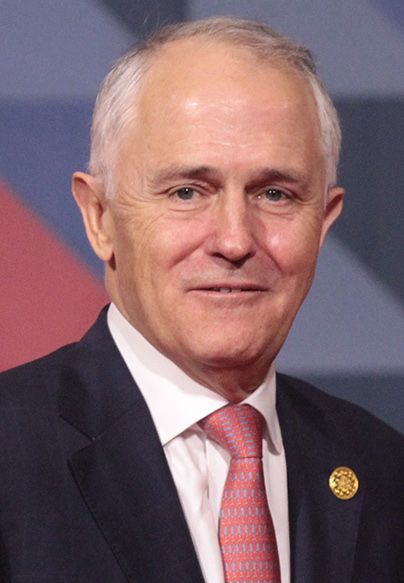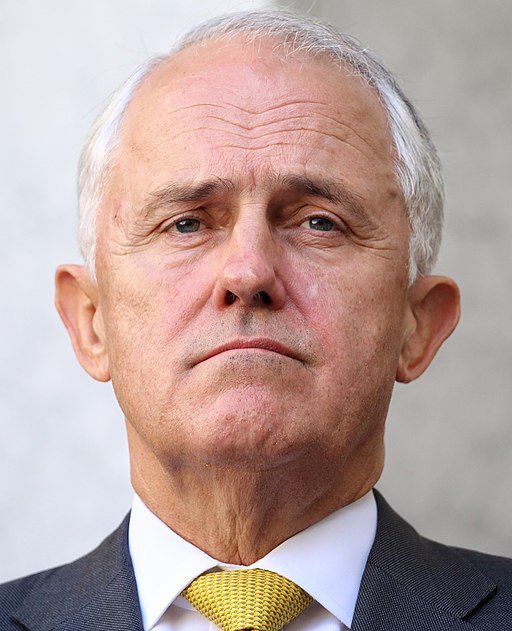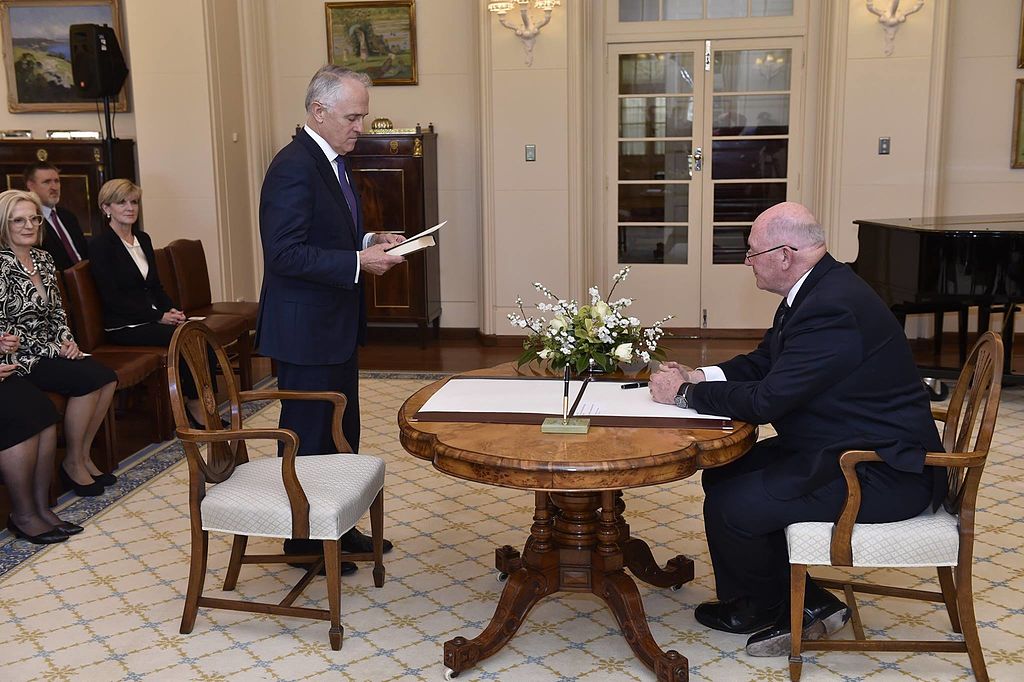Biography of Malcolm Turnbull
Malcolm Bligh Turnbull is the 29th prime minister of Australia and the leader of the Liberal Party who has been in Parliament since 2004 and a member of Wentworth. He was educated at Sydney Grammar School from 1978 to 1980. He attended, Brasenose College and won the Rhodes Scholarship despite having worked as a journalist, lawyer, investment banker and venture capitalist. Well into 1999, Turnbull became chairman of the Australian Republican Movement and stayed on as a member until 2000. Turnbull served in the Howard Ministry as Minister for Environment and Water up to 2007. Turnbull became the leader of the Liberal Party in September 2008 and decided to back the Carbon Pollution Reduction Scheme, which divided the Liberal Party by one vote to Tony Abbott. He also remained in the party as Minister for Communications in the Abbott government.

Malcolm Turnbull was born in Sydney in October 1954 and suffered from asthma as a child.His parents had divorced and his mother moved to New Zealand and migrated to the United States. In 1973, Malcolm Turnbull attended the University of Sydney and graduated with a degree in political science in 1977 and earned a second degree in law. He became active in student politics and served as the Board Director of the Sydney University Union. He also got a job as a journalist writing for the Nation Review, 2SM, and Channel 9 mainly covering state politics. Between 1978 to 1980, he won honours at Oxford.
After finishing Oxford, he became a barrister. He left the bar in 1983 and held down the job as Consul-general and Secretary for the Australian Consolidated Press Holdings Group from 1983 to 1985 when he defended Kerry Packer from Goanna allegations made by the Costigan Commission. Turnbull went into partnership with Bruce McWilliam when he established his law firm. In 1986, he defended Peter White, who was the former Mi5 official who wrote the book called the Spycatcher, to stop the British government’s attempt to ban the book from being published in Australia. Turnbull went on to write a book about the trial later on.
In 1987, he set up an investment banking firm, Whitlam Turnbull & Co. Ltd. and went into partnership with Neville Wran, former South Wales Labour Premier, of New South Wales and former State Bank of New South Wales executive Nicholas Whitlam, who was the son of Gough Whitlam, the former Australian Labour Prime Minister, until 1990, when he parted his company. Turnbull moved on to become Managing Director and Partner at Goldman Sachs.
Malcolm Turnbull was Managing Director of Goldman Sachs Australia from 1997 to 2001 and remained a partner with Goldman Sachs & Co. He also was Chairman of another Corporation, Axiom Forest Resources, which had a logging operation in the Solomon Islands. Solomon Mamaloni. The Prime Minister of the Solomon Islands, was accused company of contract breaches of logging practices in an article in the Solomon Times.
Turnbull saw the expansion of the Australian Internet service provider Ozmail from 1994 to 1999, but eventually sold the company to then-telecommunications giant MCI WorldCom, putting his worth at $60 million. His software and investment company, FTR Holdings Ltd., took over a number of Internet companies, such as Webcentral and Chaos.com. Turnbull was questioned about his role in HIH by the Royal Insurance Commission, and it was suspected that Goldman Sachs had some involvement in the collapse of the insurance company in the case of privatisation, although the royal Commission report found no evidence against him or Goldman Sachs.

Turnbull was at the time trying find the centre between left of Liberal and right of Labor despite Laurie Ferguson’s active role in the NSW Labor Council. Although Ferguson remembered Turnbull’s passionate speech about the progressive forces at the university club, in other words, small-L liberals like himself, the Communist Party and the Labor Party came together in what he called a “popular front,” a reference to World War II and left-wing anti-fascist forces,”which never got up and running because the club was not interested in university politics anyway. So he opened the meeting, and after 10-15 minutes a guy simply got up and said, “I move that this organisation be closed”, That was carried out, and it was the end of organisation!.
Turnbull ran for the seat of Wentworth in 1981 in the eastern suburbs of Sydney, but was beaten by Peter Coleman. Then he let his membership lapse in the Liberal Party.Later on, Turnbull Join the Party in 2000, the Republic referendum, was held in 1999. He was appointed by Paul Keating as Chairman of the Republic Advisory Committee, which give him authority to move Australia from a monarchy to a republican form of government, although the Referendum was defeated.
Malcolm Turnbull has a long history with the Liberal Party. During his career in 2004, he stood against Peter King for Wentworth and, won by a small margin. He became Minister for the Environment under John Howard. Turnbull became the opposition leader on the 16th of September 2008. There were scandals during his tenure, like the OzCar affair that argued that the Labour Party had gotten preferential treatment from OzCar program that led to the decline in Liberal approval ratings in opinion polls. In 2009, a party meeting was held to pass the Rudds carbon pollution scheme. In the Senate there was backbench revolt from some Liberal senators over the CPRS that started a motion against him by Wilson Tuckey, Dennis Jensen and Kevin Andrews and included Tony Abbott, who was on the front bench in the shadow cabinet.
Turnbull became Communications Minister under Abbott's Administration when he scaled down Labor's National Broadband Network. With the intention of dismantling the NBN, Turnbull put together a deal with NBN Co. and Telstra that would be cheaper and faster under his system. The then Labor's NBN plan and the cost was about $46 billion to $56 billion despite Labor’s plan and would have delivered better broadband.
Leadership tensions started building up again around this time about Tony Abbott's leadership inside the Liberal Party and his poor poll results 30 times in the row. Turnbull said that Abbott was not capable of doing the job. That brought on the spill motion against Tony Abbott and was defeated by 61 votes to 39. What type of leader is Malcolm Turnbull? the fact is he is a Liberal-leaning progressive or member of the Liberal elite who believes in climate change and wants to legalise same sex marriage. He is a member of the Left of Liberal Party on social issues and right on economic issues of the Labour Party. The country has seen much change since he came to office.

http://peopleaustralia.anu.edu.au/biography/turnbull-malcolm-17324 https://en.wikipedia.org/wiki/Malcolm_Turnbull
https://www.mup.com.au/items/161729 https://quadrant.org.au/opinion/qed/2015/12/headhunts-malcolm-turnbull/
By Radio Television Malacañang (RTVM) (source) [Public domain], via Wikimedia Commons
By Matt Roberts [CC BY-SA 2.0 (http://creativecommons.org/licenses/by-sa/2.0)], via Wikimedia Commons
By Office of the Official Secretary to the Governor-General (Commonwealth of Australia) (https://www.gg.gov.au/events/swearing-ceremony-2) [CC BY 3.0 (http://creativecommons.org/licenses/by/3.0)], via Wikimedia Commons
Welcome to Steemit Prime Minister Turnbull.
good bio